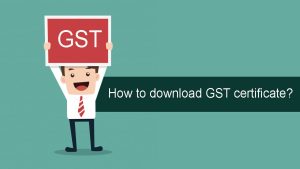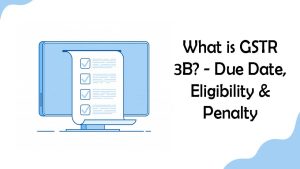Anti Profiteering Under GST
Anti Profiteering Under GST – GST Anti-Profiteering Provisions The economic sectors of numerous nations are covered by the GST system. Both Australia’s and Singapore’s economies have embraced the GST and adhere to the firefighting control regulations. GST’s introduction came to represent India’s economic progress. By integrating the indirect control system into the core, we were able to create a consistent and simple approach to collecting indirect taxes.
The primary benefit of the GST adoption is that consumers won’t be responsible for paying the taxes that are being collected by the same company that was responsible for doing so under the prior VAT system.
Prices are reduced as a result of the tax decrease, and anti-profit procedures are put in place so that buyers can benefit from it as well. This prevents the company’s sellers from making more money. Although the development of such systems is encouraged, there are a number of concerns that must be resolved.
Anti-Profiteering
The notion of profit avoidance is defined in Section 171 of the Central Goods and Services Tax (CGST), which essentially states that the advantages of a tax rate decrease or temporary tax credit should be passed on from the supplier to the receiver through the equivalent price reduction. Profiteering is the purposeful act of not decreasing the price of a product following a tax decrease.
The goal of this approach is to diminish the surplus profits generated by suppliers as a result of tax reduction following the implementation of GST. For example, if the item costs 100 rupees and the pre-GST tax rate is 15%, the MRP of the item is 115 rupees. Following the adoption of GST, the tax rate will be decreased to 5%, resulting in an MRP of Rs. 105 for identical goods.
However, suppliers have begun to raise the base price in order to maintain the MRP. As a result, corporate earnings grow while customers pay the same amount following the tax decrease. This problem is being addressed by anti-profiteering measures. According to this theory, the advantages of tax cuts must be repaid to consumers through price reductions.
Article 171 of the statute is divided into three subsections. Section 171 (1) defines anti-profiteering, and Subsection 2 mandates the formation of a national anti-profiteering body to guarantee that the provider complies with the terms of Subsection 1. Subsection 3 addresses compliance with the authorities’ power and duties as outlined in Rules 122-137 of the CGST Rule 2017. In 2019,
Subsection 3A was introduced. It specifies that anybody who makes a profit under Subsection 1 must pay a penalty of 10% of that profit. The notice states that such a penalty will be applied if the money is not deposited within 30 days of the order being issued by the authorities.
National Anti-Profiteering Authority
The foundation and approval for this power are outlined in Section 126 of the 2017 Central Goods and Services Tax Rule. Five people make up the group, with the chairman being one of them. The individual serving as chairman was once the Government of India’s Secretary.
The expiry time mechanism is in place for a period of two years following the nomination of the chairman. Authorities are tasked with determining whether the beneficiary has benefited from the tax savings by paying less for the goods. If registrations violate specific rules or regulations, they may potentially be penalized or withdrawn.
Three more organizations, in addition to the National Anti-Profiteering Authority, monitor state-level adherence to anti-fraud laws. There is a standing committee made up of state and central government officials chosen by the GST Council after the state-level audit committee, which is composed of representatives from both the state and federal governments. The Directorate General of Antiprofiteering completes the list as the research arm of the National Antiprofiteering Authority.
If there is significant evidence of usage rights, a state-level review body looks at the complaint file before sending it to the Standing Committee. In addition, the case will be forwarded to the Directorate-General for Anti-Profiteering for extra investigation if the Standing Committee finds prima facie evidence. After conducting an investigation, the DGA will refer the matter to the National Antiprofiteering Authority, which will issue a fine or raise the price to ensure that consumers benefit from the tax cut.
Conclusion
The economy has had substantial ups and downs as a result of recent economic changes. Recognizing that enforcement alone won’t address the issue is crucial; instead, a forward-thinking strategy for economic development is needed.
The implementation of these policies is crucial. As in other countries, anti-profiteering is a necessary and effective activity in and of itself. On the other hand, the ambiguity of the authorities’ criteria, regulations, and processes have an impact on their actual application. Adopting policies alone will not suffice; adequate preparations and steps must be taken in order to successfully deal with future problems. The authority of the authorities in such matters should be assessed, and the application of such regulations in various scenarios should be explained.



